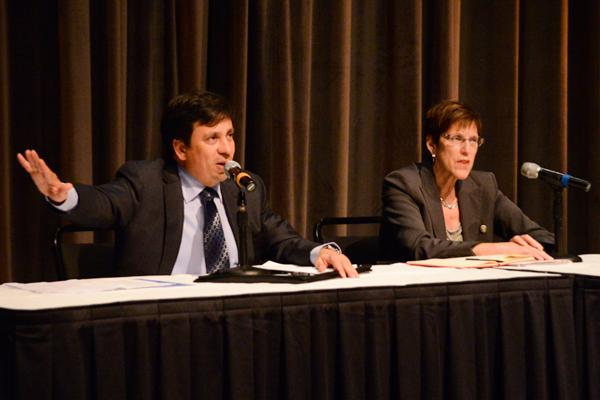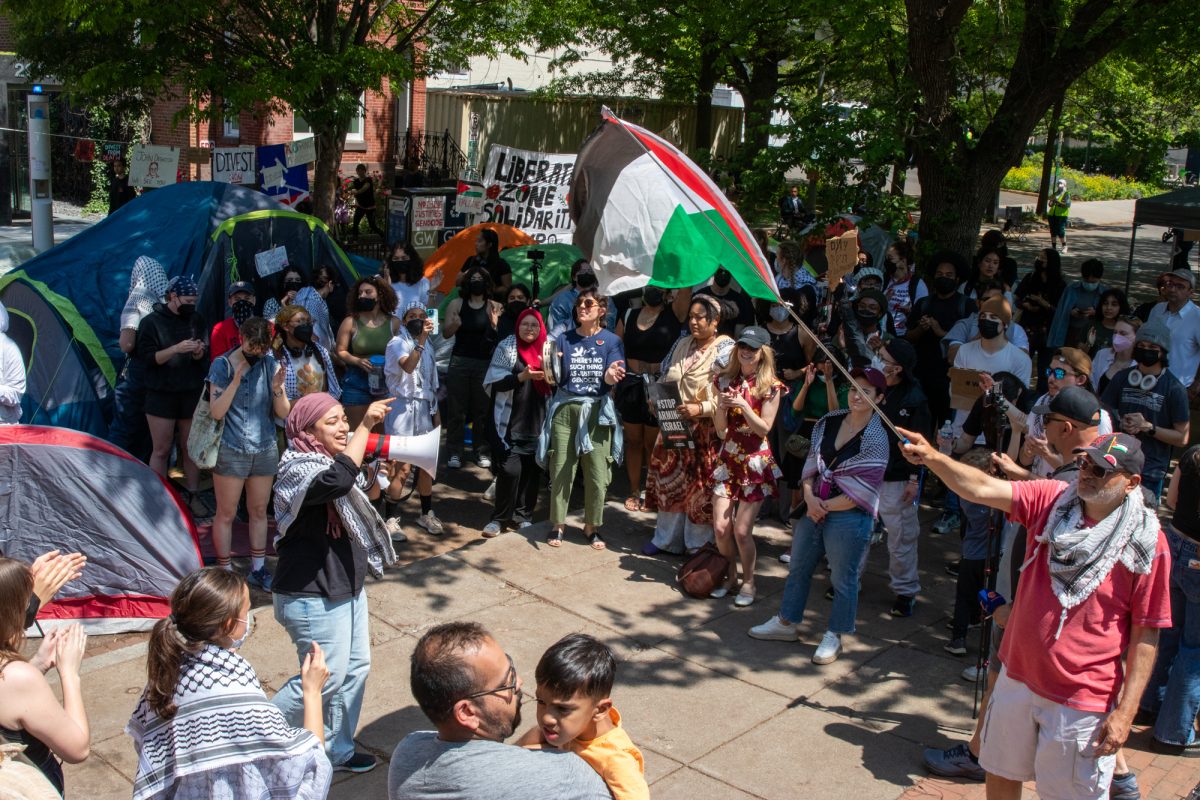Groups from across GW want the next University president to strengthen existing fundraising strategies and identify new ones.
Students and faculty said in interviews and at presidential search town halls this month that the next president should amp up philanthropy strategies to reduce GW’s reliance on tuition. Although officials have built up fundraising attempts in recent years, faculty and students said administrators should identify untapped approaches.
University President Steven Knapp focused on the University’s fundraising targets over his near-decade as president: He restructured GW’s development office, secured record-size gifts, led GW to $882 million in donations for the $1 billion campaign, expanded fundraising responsibilities for deans and promoted financial aid and philanthropy.
Students and faculty said that the next president needs to build on Knapp’s foundation and continue to find new ways to fundraise.
Nelson Carbonell, the chairman of the Board of Trustees, said in an interview earlier this month that he and others conducting the search were looking for an innovative leader in all areas, including philanthropy.
When participants at the town halls asked Carbonell what strategies he hoped GW would use, he said the next University president would have to decide.
“If I could give you an example, we’d be already doing it,” he said in the interview. “We shouldn’t sit on good ideas. I think that the next president — they ultimately need to demonstrate that they can tackle tough problems, that they can innovate and bring people with them.”
Participants in the presidential search town halls repeatedly brought up weak spots in existing philanthropy work, like the low number of alumni donations. They cited the 10 percent giving rate as evidence that officials must improve the strategy for alumni fundraising.
“There are institutions that have a 20, 30, 50 percent rate,” Carbonell said at one town hall. “There’s something that we need to do differently, and we need leadership that can help us figure it out.”
Eric Johnson, the senior vice president for advancement at Tufts University and a 1981 GW alumnus, said universities across the country are identifying alternative revenue streams and emphasizing alumni donations.
“GW, like Tufts and other institutions like us, faces the challenge of finding the right ways to gain the attention and support of our alumni,” Johnson said in an email. “We are all constantly looking for ways to approach people with differing interests and experiences to tie them back to their university.”
Trustee Madeleine Jacobs, the chair of the presidential search committee, said in an email that Knapp, who will step down at the end of this academic year, has been “instrumental” in bringing in large donations and raising money for student scholarships.
Members of the presidential search committee will think about fundraising when they consider candidates, she added.
“We will be looking for inspirational candidates who have strong fundraising skills and a proven track record in philanthropy, as well as a passion for high quality education and research,” Jacobs said.
Annamarie M. Bezzerides, the associate vice president of advancement at Georgetown University, said universities like Georgetown and GW need philanthropic contributions to fund students who cannot pay full tuition. This year’s financial aid budget reached more than $275 million.
Donations can fund financial aid and help the University work towards combatting tuition reliance, Bezzerides said.
“You have to look at the size of the endowment, how many students are on financial aid and how much of that financial aid is being provided as a result of philanthropy,” she said.
The credit rating agency Moody’s reported that GW relied on tuition and related fees for 62 percent of its operating revenue in fiscal year 2016 — a rate the University has used since 2013. Knapp said in a memo two years ago that the University is roughly 75 percent reliant on tuition.
Besides enlarging the financial aid pool by 5.6 percent this year, administrators sold the provost’s former residence on the Mount Vernon Campus to raise funds for financial aid for students affiliated with programs on that campus and expanded the career and internship fund. Student-led efforts like the Senior Class Gift campaign are dedicated to increasing aid.
Charles Garris, a mechanical and aerospace engineering professor who has taught at GW for more than 40 years, said Knapp’s fundraising is different than past presidents’ strategies because he has prioritized individual schools and programs over the University as a whole. Knapp’s strategy could be appealing to donors who want to see their money fund specific purposes.
“Fundraisers have to say ‘We have students who are making progress in research, helping the human condition, doing wonderful things for the world — they’re making history,’” Garris said. “That’s something that people are willing to give their money, and that’s why fundraising has become much more successful under Knapp than it ever was before.”
Garris said GW’s scarcity of endowed faculty positions and other small programs demonstrates room for a more focused approach in fundraising, though. In 2014, about 13 percent of the University’s endowment funded professorships.
“If you go next door to me, there’s a faculty who has a sign on his door saying ‘Karlgaard Chair.’ At GW, that’s very rare,” Garris said. “But if you go to other universities like Princeton, MIT, Stanford, Virginia Tech, University of Virginia, any big university, and you walk down the corridors, you’ll see every door has that kind of sign. In other words, almost every professor has support from an endowment.”
Heather Joslyn, the assistant managing editor of The Chronicle of Philanthropy, said universities are more often running capital campaigns, and universities want presidents with the skills to lead them. GW’s next president will be tasked with completing the $1 billion campaign by June 2018.
“A lot of universities are seeking someone who can talk to big donors and get them engaged,” Joslyn said. “Someone who can be fundraiser-in-chief.”








